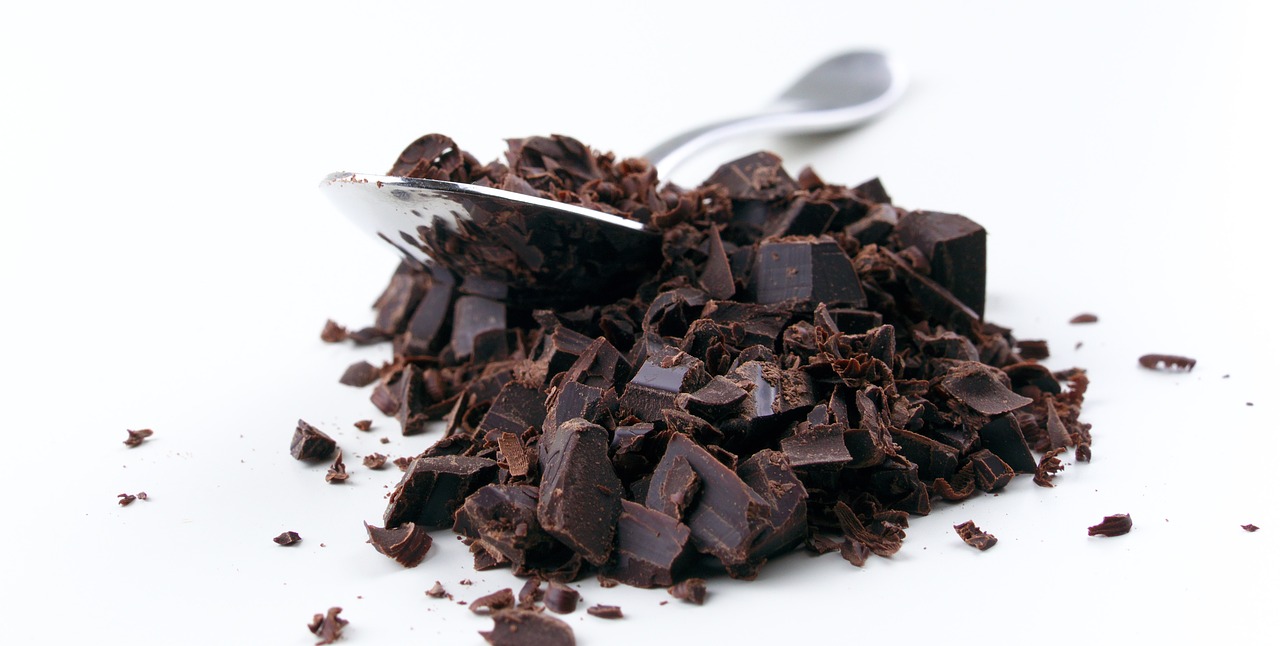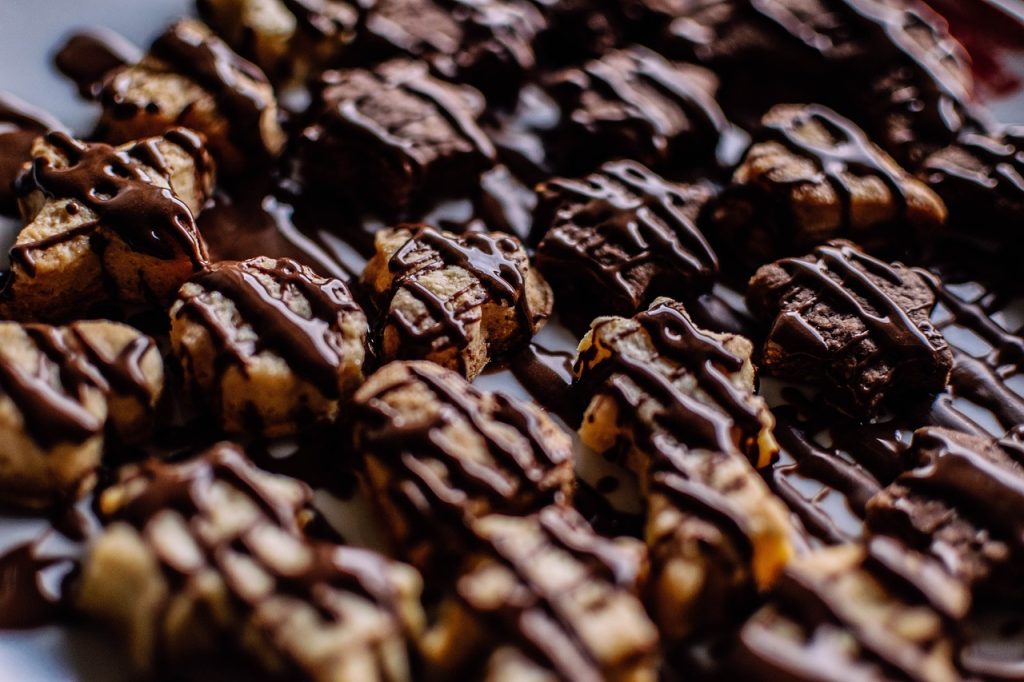How Much Caffeine In Chocolate Covered Espresso Beans?

Have you ever wondered how much caffeine is in those delightful chocolate covered espresso beans? Well, wonder no more! In this article, we will explore the caffeine content of these decadent treats and provide you with all the information you need to satisfy your caffeine curiosity. So, grab a cup of coffee, sit back, and let’s dive into the world of chocolate covered espresso beans and their caffeine levels.
What Are Chocolate Covered Espresso Beans?
Definition
Chocolate covered espresso beans are a delicious treat that combines the rich flavors of chocolate with the bold and invigorating taste of espresso. These bite-sized treats consist of whole coffee beans that have been roasted and covered in a layer of chocolate. They provide a unique combination of caffeine and chocolate, creating a delightful snack for coffee lovers around the world.
Ingredients
The ingredients used to make chocolate covered espresso beans are relatively simple. The two main components are coffee beans and chocolate. Coffee beans are typically used in their whole form, offering a robust and intense flavor. The chocolate coating can vary, ranging from dark chocolate to milk chocolate, allowing individuals to choose their preferred level of sweetness. Additional ingredients such as sugar, cocoa butter, and flavorings may be used depending on the specific recipe.
Production Process
The production process of chocolate covered espresso beans involves several steps to create the perfect balance of flavors. First, high-quality coffee beans are carefully selected and roasted to bring out their unique taste profiles. Once the beans have been roasted, they are coated in a layer of melted chocolate. This can be done by either dipping the beans into the chocolate or using a specialized machine to evenly coat each bean. The chocolate-coated beans are then cooled and hardened, creating a delectable and bite-sized treat that combines the best of coffee and chocolate.

Caffeine Content in Espresso Beans
Natural Caffeine Content
Before delving into the caffeine content of chocolate covered espresso beans, it is important to understand the natural caffeine content of espresso beans themselves. Espresso beans, also known as coffee beans, naturally contain caffeine. The exact amount of caffeine can vary depending on factors such as the type of coffee bean, the brewing method, and the serving size. On average, a single espresso bean can contain anywhere from 5-10 milligrams of caffeine.
Roasting and Brewing Effects on Caffeine Content
The caffeine content in espresso beans can be influenced by the roasting and brewing process. When coffee beans are roasted, the heat causes some of the caffeine to break down, resulting in a slightly lower caffeine content. Similarly, the brewing method used can also affect the caffeine content of the final beverage. Longer brewing times tend to extract more caffeine from the beans, while shorter brewing times may result in a milder caffeine content.
Standard Caffeine Measurements
To give you a better understanding of the caffeine content in espresso beans, it is helpful to have some standard measurements. A typical 8-ounce cup of coffee contains approximately 95 milligrams of caffeine. Comparatively, a single shot of espresso, which is approximately 1 ounce, contains around 63 milligrams of caffeine. This serves as a reference point to better gauge the caffeine content in chocolate covered espresso beans.
Caffeine Content in Chocolate Covered Espresso Beans
Caffeine Retention in Chocolate
When coffee beans are coated in chocolate to create chocolate covered espresso beans, some of the caffeine naturally transfers from the beans into the chocolate. However, it is important to note that not all of the caffeine is retained during this transfer. The exact amount of caffeine retained in the chocolate can vary depending on several factors, including the type of chocolate used, the chocolate-to-coffee ratio, and the specific production methods employed.
Factors Affecting Caffeine Content
Several factors can influence the caffeine content found in chocolate covered espresso beans. The first and most obvious factor is the starting caffeine content of the espresso beans themselves. Since caffeine is naturally present in coffee beans, the initial caffeine content will directly impact the final caffeine content of the chocolate covered beans. Additionally, the ratio of chocolate to coffee beans can also impact the overall caffeine level. Higher ratios of chocolate may result in a lower caffeine concentration, while lower ratios could lead to a higher caffeine concentration.
Measuring Caffeine in Chocolate Covered Espresso Beans
Laboratory Analysis
To accurately measure the caffeine content in chocolate covered espresso beans, laboratory analysis is often conducted. In this process, a sample of the beans is taken and analyzed using specialized equipment. The caffeine is extracted from the beans and measured to determine the exact concentration. This method provides precise results and is commonly used by manufacturers to ensure consistency in their products.
Estimated Caffeine Content
While laboratory analysis provides the most accurate measurement of caffeine content, it may not always be readily available to consumers. In such cases, estimated caffeine content can provide a helpful approximation. By considering factors such as the caffeine content of the espresso beans and the chocolate-to-coffee ratio, a rough estimate of the caffeine content in chocolate covered espresso beans can be calculated. This can give individuals a general understanding of the caffeine concentration they can expect.
Health Effects of Caffeine
Stimulant Properties of Caffeine
Caffeine is a natural stimulant that affects the central nervous system. It can provide temporary increased alertness and reduced feelings of fatigue. This stimulant property is one of the main reasons people are drawn to consuming caffeine-containing products, such as chocolate covered espresso beans. It can help individuals feel more awake and focused, making it a popular choice for busy mornings or long study sessions.
Recommended Daily Intake
While caffeine can provide various benefits, it is important to consume it in moderation. The Food and Drug Administration (FDA) recommends a daily caffeine intake of no more than 400 milligrams for most healthy adults. This equates to about 4 cups of coffee or approximately 10 chocolate covered espresso beans, depending on their caffeine content. It is essential to be mindful of your daily caffeine intake and consider the consumption of other caffeinated products throughout the day.
Potential Side Effects
Consuming excessive amounts of caffeine can lead to various side effects. These can include increased heart rate, jitteriness, insomnia, gastrointestinal discomfort, and anxiety. Additionally, caffeine can act as a diuretic, which may increase the need to urinate more frequently. It is important to be aware of your personal sensitivity to caffeine and adjust your intake accordingly to avoid any potential negative effects.
Factors Impacting Caffeine Sensitivity
Individual Differences
Caffeine sensitivity can vary widely among individuals. Factors such as age, weight, overall health, and genetics can influence how rapidly the body metabolizes and responds to caffeine. Some individuals may find that they are more sensitive to the effects of caffeine, while others may have a higher tolerance.
Tolerance and Dependence
Regular caffeine consumption can lead to tolerance and dependence. With regular intake, the body becomes accustomed to the presence of caffeine and may require higher doses to achieve the same effects. This can result in an increased tolerance and potential dependence, where individuals may experience withdrawal symptoms if they abruptly decrease or cease their caffeine intake.
Interactions with Medications
Caffeine can interact with certain medications, such as certain antibiotics or medications used to treat heart conditions. It is important to consult with your healthcare provider if you are taking any medications to determine if there are any potential interactions with caffeine. They can provide guidance and help you make informed decisions on the consumption of chocolate covered espresso beans and other caffeine-containing products.
Consuming Chocolate Covered Espresso Beans
Serving Size and Caffeine Intake
When consuming chocolate covered espresso beans, it is important to be mindful of the serving size and its impact on caffeine intake. The exact caffeine content per bean can vary, so carefully read the packaging or consult the manufacturer for more specific information. By considering the caffeine content per serving and your personal caffeine tolerance, you can make informed decisions about portion sizes to ensure a comfortable and enjoyable experience.
Time of Consumption
The timing of consuming chocolate covered espresso beans can also influence the experience. Since caffeine is a stimulant, it is best to avoid consuming them too close to bedtime, as it may interfere with sleep. Additionally, consuming them in the morning or early afternoon may provide a natural energy boost during the day when it is most needed.
Combining with Other Caffeinated Products
If you consume other caffeinated products, such as coffee or energy drinks, it is important to consider the cumulative effect of caffeine. Be mindful of your total caffeine intake throughout the day to avoid exceeding the recommended daily limits. Adjust your consumption of chocolate covered espresso beans accordingly to ensure you are staying within a comfortable and safe range.
Alternatives to Chocolate Covered Espresso Beans
Decaffeinated Espresso Beans
If you enjoy the taste and texture of chocolate covered espresso beans but prefer to limit your caffeine intake, decaffeinated espresso beans are a great alternative. These beans undergo a process to remove most of the caffeine while retaining their aromatic flavors. Decaffeinated chocolate covered espresso beans offer a similar taste experience without the stimulant effects of caffeine.
Other Caffeinated Chocolate Products
For those who enjoy the combination of caffeine and chocolate, there are various other chocolate products available that contain caffeine. Chocolate bars infused with coffee or espresso flavors can provide a similar taste experience to chocolate covered espresso beans. Additionally, some brands offer chocolate-covered coffee beans that have been ground and incorporated into the chocolate coating, providing a unique texture and flavor combination.
Non-Caffeinated Chocolate Treats
If you are looking for a chocolate treat but prefer to avoid caffeine altogether, there are numerous non-caffeinated options to explore. Dark chocolate, in particular, offers a rich and indulgent taste without the caffeine content found in milk chocolate. Additionally, various flavored chocolates and truffles can provide a delightful alternative for those seeking a caffeine-free chocolate experience.
Conclusion
Chocolate covered espresso beans offer a delightful fusion of coffee and chocolate flavors, making them a popular treat for coffee enthusiasts. The caffeine content in these beans can vary depending on factors such as the type of coffee bean, the chocolate-to-coffee ratio, and the production methods. It is important to be mindful of your caffeine tolerance, overall caffeine intake, and potential interactions with medications when enjoying these treats. Chocolate covered espresso beans can provide a boost of energy and enhance alertness, but it is crucial to consume caffeine-containing products in moderation. Whether you choose the caffeinated or decaffeinated version, chocolate covered espresso beans are sure to satisfy your cravings for a delectable and energizing treat.
